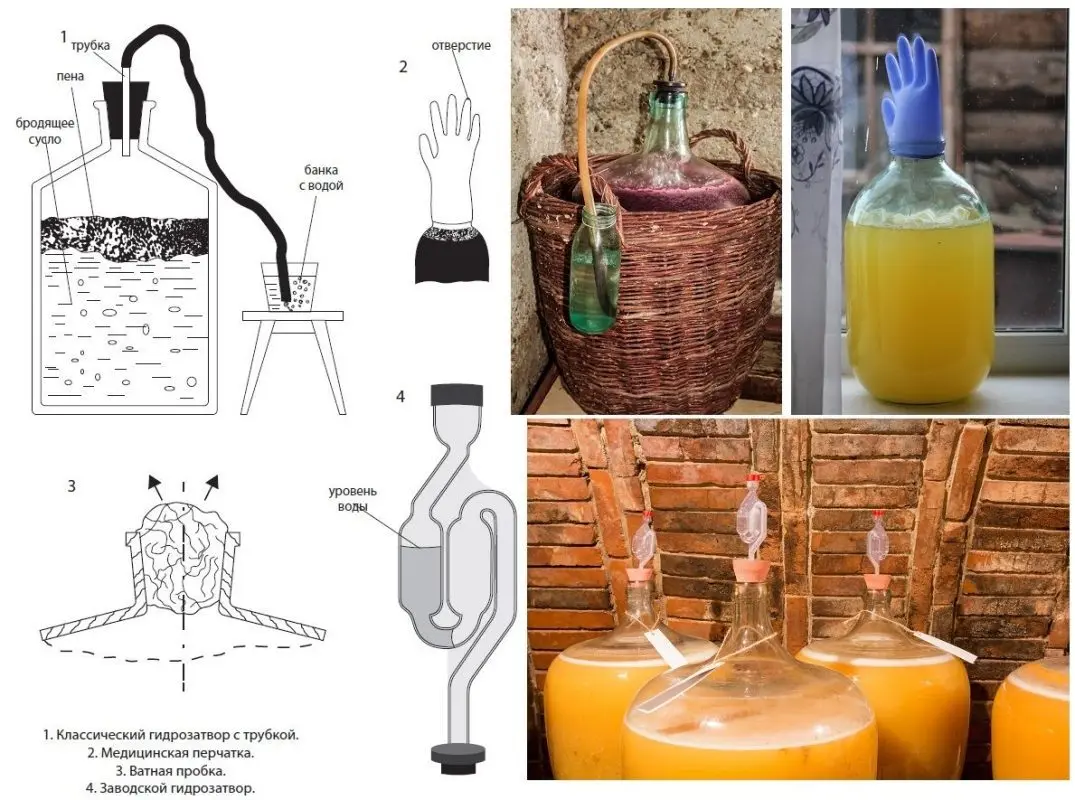Properly made homemade persimmon wine turns out to be a beautiful yellow or amber color with a slight fruity aroma and honey notes on the palate. Basically, this drink is popular in Korea, but has found its connoisseurs in Russia.
Ripe persimmons of any variety are suitable, it is desirable that the fruits are not very tart, as this astringency will be transferred to the wine. Before starting cooking, the raw materials are carefully inspected for blackened, rotten and moldy parts. If necessary, spoiled parts are cut out, since even a small amount of bad pulp can spoil the entire batch of wine.
To avoid infection of the wort with mold and other pathogenic microorganisms, tools and containers must be sterilized with boiling water and wiped dry with a clean cloth. Handle wine only with clean, soapy hands.
Ingredients:
- persimmon – 3 kg;
- water – 2,5 liters;
- sugar – 650 gram;
- citric acid – 5 grams per 1 liter of must;
- sourdough or wine yeast – for 6 liters of must.
Citric acid is needed to stabilize the acidity of the must; without it, fermentation will be weak, and the finished wine will not store well. It is advisable to replace the acid in the powder with freshly squeezed lemon juice – one medium-sized fruit contains 5-6 grams of acid.
If the persimmon is homemade, you can not add wine yeast or sourdough, but rely on wild yeast that lives on the skin. Store-bought fruits are often treated with preservatives, so the chance that they themselves will ferment is small.
persimmon wine recipe
1. If there is no wine yeast, make a leaven 3-4 days before working with raw materials. It is impossible to add baker’s or alcohol yeast, otherwise you will get mash instead of wine.
2. Cut the persimmon into several pieces, remove the seeds (if any) and white pulp.
3. Grind the prepared pieces together with the peel with a meat grinder, blender or in any other way.
4. Place the resulting mass in a non-metallic container with a wide neck – a basin or bucket.
5. Dissolve 350 grams of sugar in cold water. Pour chopped persimmon syrup over. Add sourdough or wine yeast. Mix.
6. Cover the container with gauze or cloth, then transfer to a dark place with a temperature of 18-28°C. Leave for 3 days. Every 8-10 hours stir the wort, drowning in the juice the pulp that has surfaced – the skin and particles of pulp. A few hours after adding the yeast, signs of fermentation should appear: foam, hiss and a characteristic smell. This means that everything is going well.
7. Filter the wort through several layers of gauze, squeeze the pulp dry.
8. Add citric acid and 150 grams of sugar to pure juice. Mix. Pour the wort into a fermentation tank, fill up to a maximum of 75% of the volume, so that there is room for sugar and foam. Install a water seal of any design, you can use a medical glove with a hole pierced by a needle in one of the fingers. Transfer the container to a dark room (or cover with a thick cloth) with a stable temperature of 20-28°C.

9. After 7 days from the date of installation of the water seal, add the remaining sugar (150 grams). To do this, pour 100 ml of fermenting juice into a separate container, dilute sugar in it, pour the resulting syrup into a container with wine and close it again with a water seal.
Depending on temperature and yeast, homemade persimmon wine ferments for 35-60 days. Then the water seal stops gurgling (the glove deflates), a layer of loose sediment appears at the bottom, and the wine itself becomes lighter. If these symptoms appear, move on to the next step.
If the wine has been fermenting for more than 50 days from the date of installation of the water seal, in order to prevent the appearance of bitterness, the drink must be drained from the sediment and allowed to ferment at the same temperature under a water seal.
10. Pour the fermented young wine through a straw into another container, without touching the sediment at the bottom. To taste. If desired, sweeten with sugar or fix with vodka (alcohol) in an amount of 2-15% of the volume. Fortified wine is tougher in taste, but keeps better.
11. Pour the drink into holding containers. To minimize contact with oxygen (causes oxidation), it is advisable to pour the wine right up to the neck. Close hermetically. If sugar was added at the previous stage, for reinsurance against repeated fermentation, it is better to install a water seal for the first 7-10 days, and then close it hermetically.
12. Transfer the wine to a refrigerator or cellar for aging. Leave for at least 5-6 months. Aging significantly improves the taste of wine.
13. When a precipitate appears with a layer of 3-5 cm, filter the drink by pouring it through a tube into another container. The wine is considered ready if the sediment does not appear for several months.
14. If desired, pour the wine into bottles for storage and seal tightly. Shelf life in the refrigerator or basement – up to 3 years. Fortress – 10-14%.










